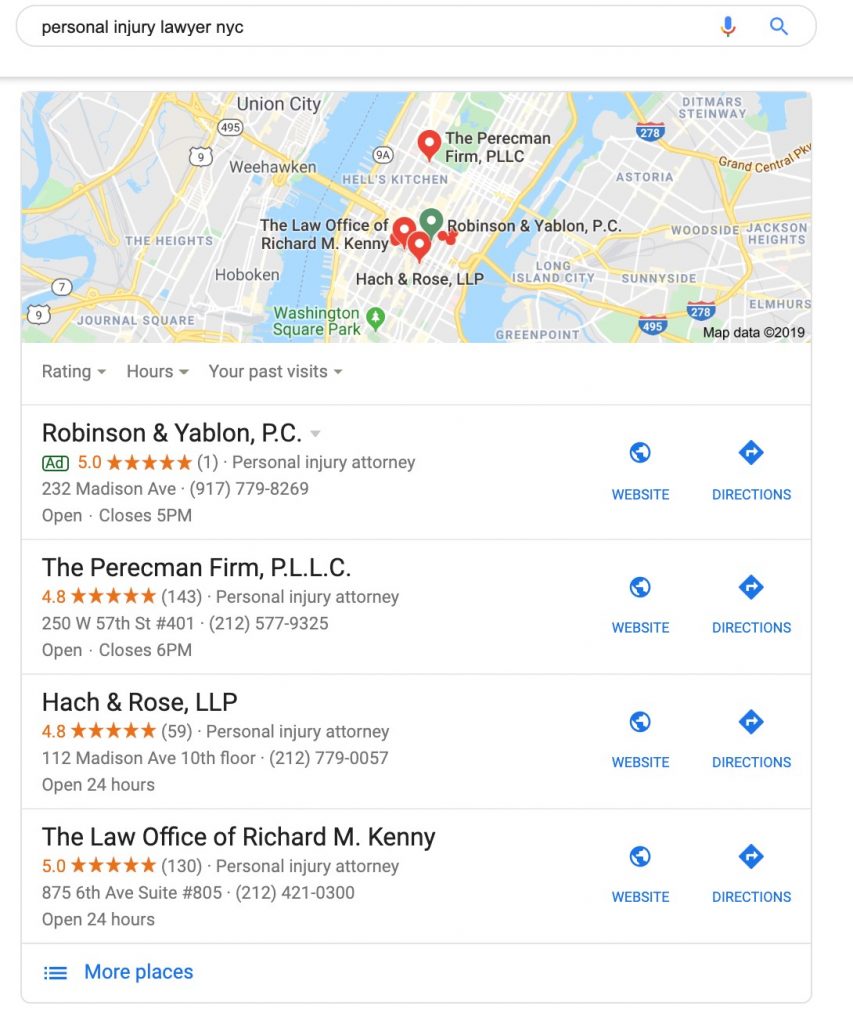Google’s Natural Language Processing Updates and SEO
“At its core, Search is about understanding language. It’s our job to figure out what you’re searching for and surface helpful information from the web, no matter how you spell or combine the words in your query”- Google Oct 2019
At the heart of all of Google’s investments, is natural language processing or NLP. Google faces the ultimate problem. How do you teach machines which process information as a series of 0s and 1s, to understand human language with all its complicated nuance? NLP is a field of Artificial Intelligence research that attempts to tackle this problem.
Algorithm Updates Then and Now
Google tells us that they constantly deploy new algorithmic updates in search. Many large search updates have been focused on a website itself and how Google understands a web page. However, Google has now released 2 major algorithmic updates in October and November (2019), both focused on the search engine’s ability to understand human language and the intent behind a query.
Algorithm Updates Impact on Organic Search Returns
In October, Google released the BERT update that applies to the organic search returns. BERT stands for Bidirectional Encoder Representations from Transformers. Bidirectional means BERT can analyze the words before and after a query to determine the content and meaning. Transformers are “models that process words in relation to all the other words in a sentence, rather than one-by-one in order.” This means that Google can now use the entire context of a sentence to interpret the search instead of just looking at it as a string of words.
Google has also been making significant investments in its processing infrastructure to make deploying this type of natural language processing possible. In short, it requires a massive amount of computing power (and dollars) to use this type of technology in everyday search. Why? As a for-profit company, Google needs eyeballs on its search returns to sell ads. And in their estimation, better returns = more users.
Algorithm Updates Aimed at Local Search Results
In November, Google released another update, this time impacting the local search returns. The local returns are the local pack we see in a local search return that generally features 3 Google My Business listings and potentially an ad. Google My Business listings serve as the digital representation of a real-world physical business and provide Google data to help the algorithm understand what the business does, sells, etct.

The local search algorithm is based on 3 factors: Proximity, Relevance and Prominence. This Whiteboard Friday has a great summary how local search works:
Proximity = distance to the searcher.
Relevance = does the business feature the things the user is searching for?
Prominence = how does the business stand out as it relates to what the user is searching for. This can include reviews, review content, website content as well as citations
The local SEO community began reporting wild swings in the local search returns in November, so much so that the suspected update was termed “Bedlam”. After a month of turbulence, Google confirmed the update:
https://twitter.com/i/web/status/1201549327144898567
Neural Matching
This update is focused on Neural Matching:
https://twitter.com/searchliaison/status/1108776358430138368?s=20
Google has stated that this update will help them go beyond the business’s name or description to understand how it might relate to a user’s search and their intent. This was the first time Google has confirmed an algorithmic update in Local SEO, which indicates the importance of this update. Already released for organic search last year, this is the first time it has been applied to the local returns.
Based on the announcement, we can assume that Google is now using Neural matching to better understands words and concepts and apply them to the 3 ranking factors mentioned above. Danny Sullivan, Google’s public @searchliason,confirmed that in the tweet below:
https://twitter.com/dannysullivan/status/1201565938157596673?s=20
What’s the common thread here and what do we need to do?
These updates relate to Google’s ability to further parse and understand human language with the goal of providing better search returns. It’s our role, as marketers and business owners, to provide the entities in the search return that match a user’s question in the form of a website or Google My Business listing.
We need to make sure we have a fully optimized Google My Business listing that takes advantage of the content features Google offers.
We need to get the technical SEO right, so that the website can get crawled and indexed. That’s why a crucial part of our SEO process is a technical audit. It’s our job to make sure that the content on the website can be found by Google and analyzed. We need to make sure we are using the terms and concepts on our websites that best represent our business in the real world. The content on your website is the bridge built between the user’s search and the machine’s ability to understand that your website is the best answer for the user’s search. Content audits and recommendations are also a critical part of our approach to SEO and will continue to be in 2020.












